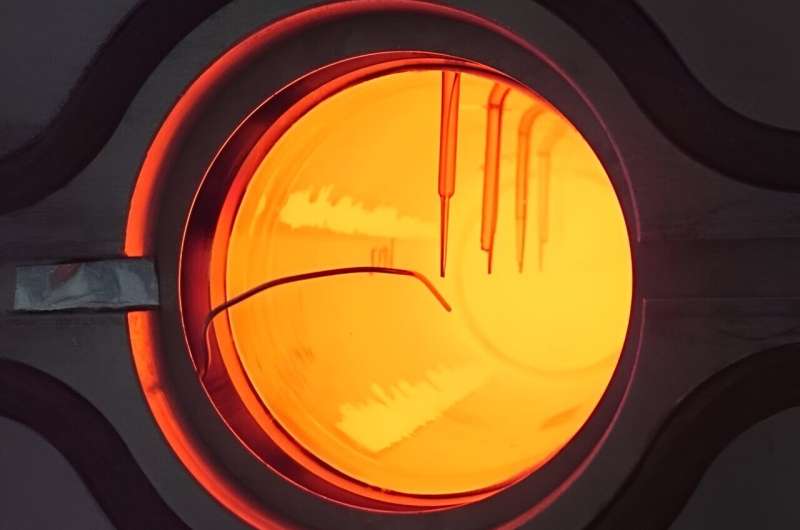This article has been reviewed according to Science X's editorial process and policies. Editors have highlighted the following attributes while ensuring the content's credibility:
fact-checked
peer-reviewed publication
trusted source
proofread
Scientists generate heat over 1,000°C with solar power instead of fossil fuel

Instead of burning fossil fuels to smelt steel and cook cement, researchers in Switzerland want to use heat from the sun. The proof-of-concept study, published May 15 in the journal Device, uses synthetic quartz to trap solar energy at temperatures over 1,000°C (1,832°F), demonstrating the method's potential role in providing clean energy for carbon-intensive industries.
"To tackle climate change, we need to decarbonize energy in general," says corresponding author Emiliano Casati of ETH Zurich, Switzerland. "People tend to only think about electricity as energy, but in fact, about half of the energy is used in the form of heat."
Glass, steel, cement, and ceramics are at the very heart of modern civilization, essential for building everything from car engines to skyscrapers. However, manufacturing these materials demands temperatures over 1,000°C and relies heavily on burning fossil fuels for heat.
These industries account for about 25% of global energy consumption. Researchers have explored a clean-energy alternative using solar receivers, which concentrate and build heat with thousands of sun-tracking mirrors. However, this technology has difficulties transferring solar energy efficiently above 1,000°C.
To boost the efficiency of solar receivers, Casati turned to semitransparent materials such as quartz, which can trap sunlight—a phenomenon called the thermal-trap effect. The team crafted a thermal-trapping device by attaching a synthetic quartz rod to an opaque silicon disk as an energy absorber.
When they exposed the device to an energy flux equivalent to the light coming from 136 suns, the absorber plate reached 1,050°C (1,922°F), whereas the other end of the quartz rod remained at 600°C (1,112°F).
"Previous research has only managed to demonstrate the thermal-trap effect up to 170°C (338°F)," says Casati. "Our research showed that solar thermal trapping works not just at low temperatures, but well above 1,000°C. This is crucial to show its potential for real-world industrial applications."
Using a heat transfer model, the team also simulated the quartz's thermal-trapping efficiency under different conditions. The model showed that thermal trapping achieves the target temperature at lower concentrations with the same performance, or at higher thermal efficiency for equal concentration. For example, a state-of-the-art (unshielded) receiver has an efficiency of 40% at 1,200°C, with a concentration of 500 suns.
The receiver shielded with 300 mm of quartz achieves 70% efficiency at the same temperature and concentration. The unshielded receiver requires at least 1,000 suns of concentration for comparable performance.
Casati and his colleagues are now optimizing the thermal-trapping effect and investigating new applications for the method. So far, their research has been promising. By exploring other materials, such as different fluids and gases, they were able to reach even higher temperatures. The team also noted that these semitransparent materials' ability to absorb light or radiation is not limited to solar radiation.
"Energy issue is a cornerstone to the survival of our society," says Casati. "Solar energy is readily available, and the technology is already here. To really motivate industry adoption, we need to demonstrate the economic viability and advantages of this technology at scale."
More information: Solar thermal trapping at 1000 ºC and above, Device (2024). DOI: 10.1016/j.device.2024.100399. www.cell.com/device/fulltext/S2666-9986(24)00235-7


















